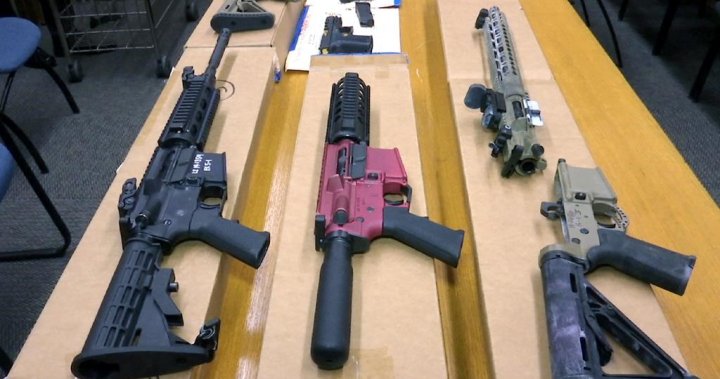The emergence of 3D-printed firearms, often referred to as “ghost guns,” poses a growing threat to communities on both sides of the US-Canada border. These weapons, characterized by their untraceable nature due to the absence of serial numbers or other identifying markings, are becoming increasingly popular among criminal elements. The ease of access to online blueprints and the ability to manufacture these weapons at home using 3D printers makes them a significant concern for law enforcement agencies. The Luigi Mangione case, where a suspected 3D-printed pistol was found, highlights the escalating presence of these weapons in criminal activities.
The production of these ghost guns involves either assembling parts from readily available kits or printing the entire firearm using a 3D printer. The receiver, a critical component of the firearm, can be 3D-printed and then combined with other legally obtainable parts like barrels and slides, effectively creating a fully functional weapon. Although changes in legislation now require a firearms license to acquire barrels and handgun slides, this has only pushed criminal entities to seek alternative methods for obtaining these parts, further complicating the issue for law enforcement. The relative simplicity of the process, coupled with the anonymity it affords users, makes it an attractive option for those seeking to evade traditional firearm regulations.
The rapid evolution of 3D-printing technology poses a significant challenge for law enforcement. The ability to produce not only single-shot pistols but also more complex firearms like assault rifles with extended magazines demonstrates the escalating capabilities of this technology. The addition of 3D-printed silencers, as seen in the Mangione case, further increases the danger posed by these weapons. The ease with which designs can be shared and modified online fuels the proliferation of these untraceable firearms. Law enforcement is struggling to keep pace with the technological advancements driving this phenomenon, leading to a growing sense of urgency in addressing the issue.
Addressing the proliferation of ghost guns requires a multi-pronged approach. In the US, the Biden administration’s efforts to implement age requirements and background checks for ghost gun kits have been challenged, highlighting the ongoing legal battles surrounding the regulation of these weapons. However, the Supreme Court’s indication of likely upholding these regulations offers a glimmer of hope. In Canada, Bill C-21 designates “unlawfully manufactured firearms” as prohibited firearms, making it illegal not only to possess but also to manufacture them without a proper license. The law further criminalizes the possession or access to computer data, including downloadable files, that can be used to manufacture firearms using 3D printers or other computer-aided systems.
Despite these legislative measures, challenges persist. The international nature of online file sharing allows individuals to obtain blueprints from countries where such information is not regulated. This makes it difficult for law enforcement to control the spread of these designs and ultimately, the production of ghost guns. Collaborative efforts between nations are crucial to address this transnational crime effectively. Sharing information and best practices, coupled with coordinated investigations, can help stem the flow of these weapons across borders. The need for consistent international legislation regarding the publication and distribution of 3D-printed firearm instructions is increasingly apparent.
Law enforcement agencies recognize the need for ongoing adaptation and innovation in their strategies to combat this evolving threat. Closely monitoring court rulings and legal precedents will inform future enforcement efforts. Continuous collaboration between law enforcement agencies, both domestically and internationally is vital to effectively address the proliferation of ghost guns. Sharing intelligence and resources, coupled with a proactive, evidence-based approach, can enhance the ability of law enforcement to identify, track, and disrupt the production and distribution of these untraceable weapons, ultimately working towards safeguarding communities on both sides of the border. The complex and continuously evolving nature of this issue underscores the need for sustained vigilance and cooperation in the ongoing effort to curb the spread of ghost guns.

